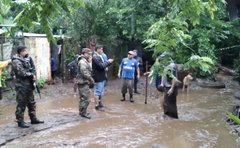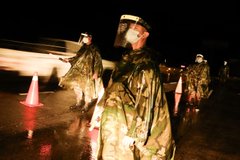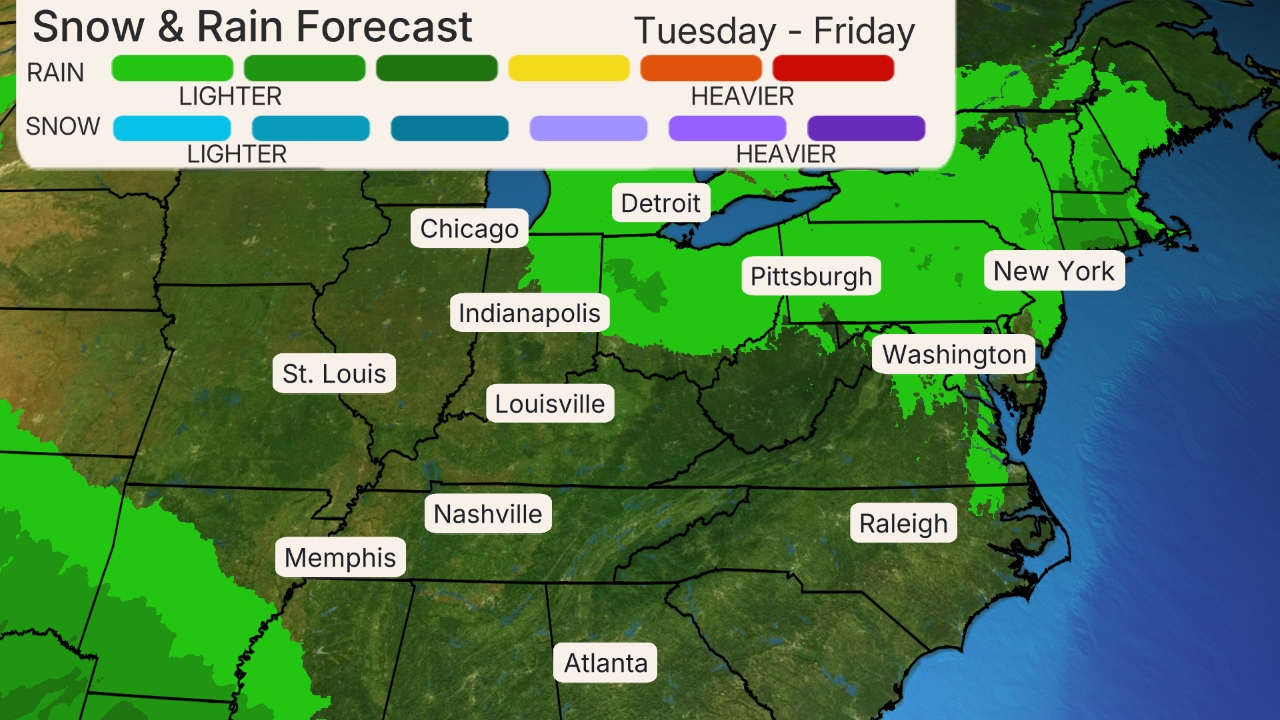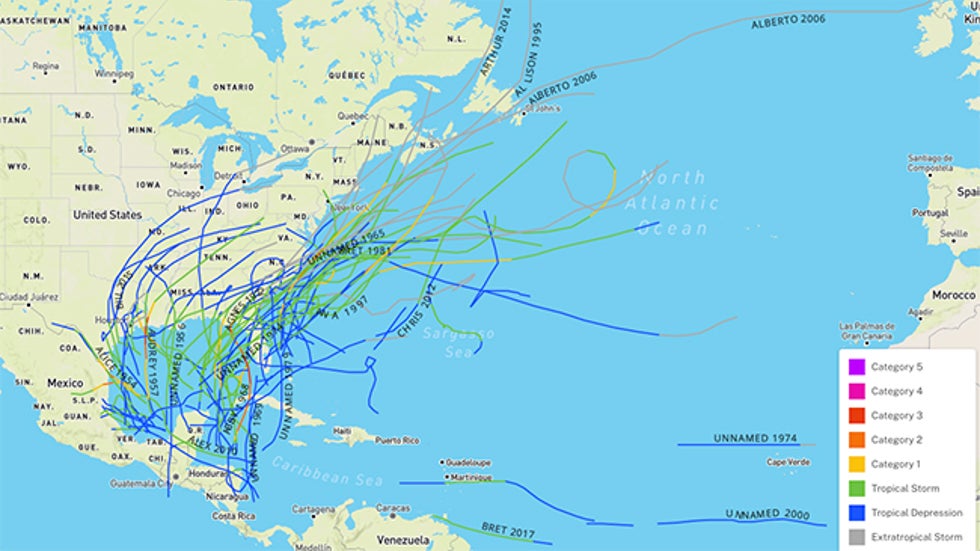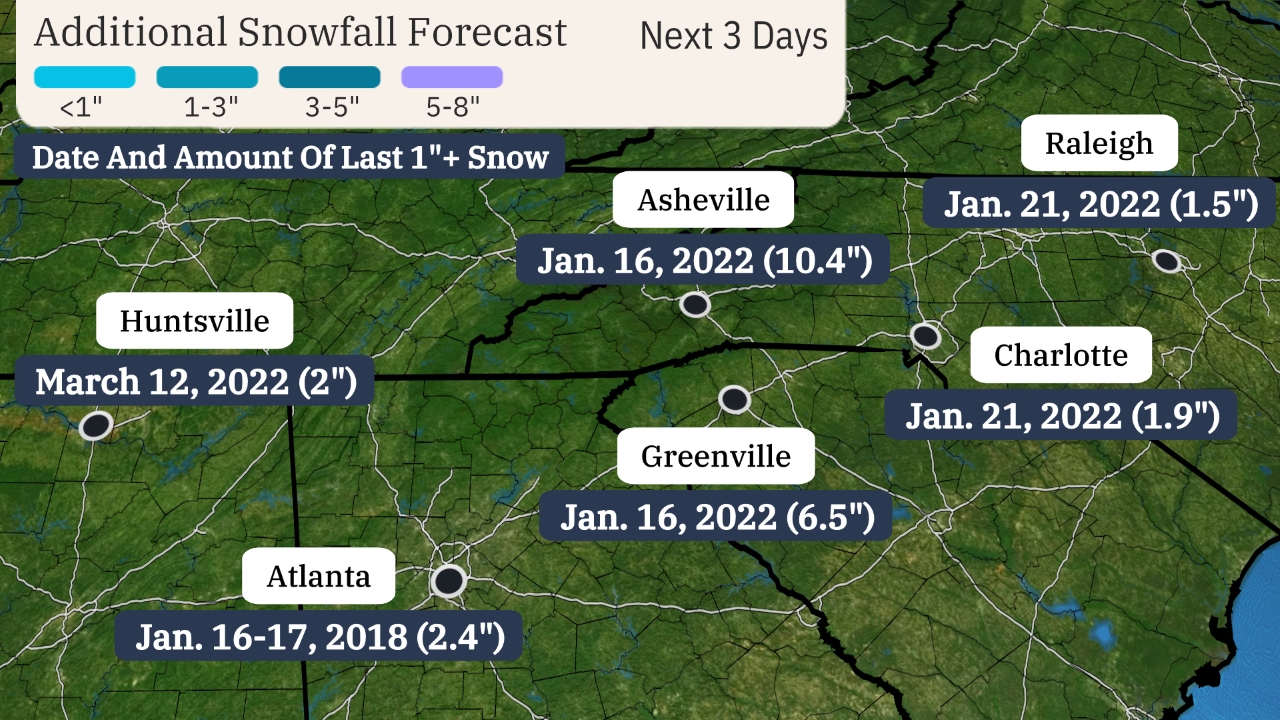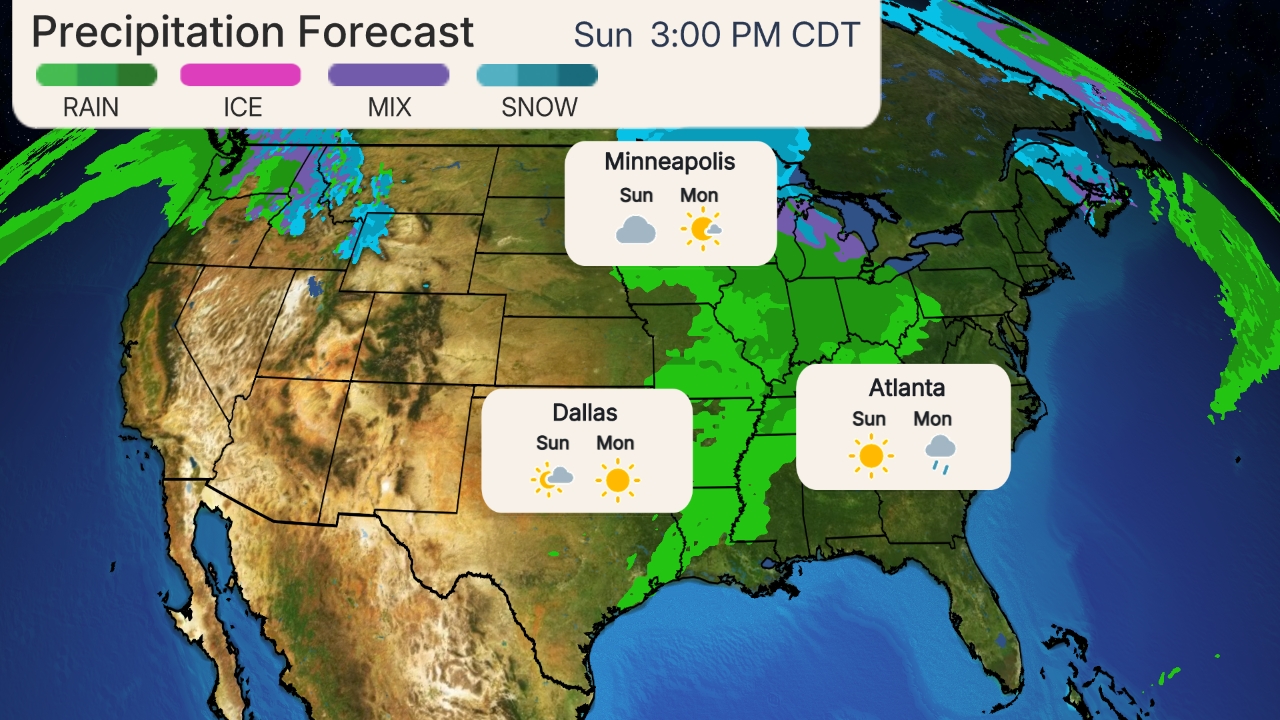Updated May. 31, 2020 11:07 PM
After making landfall as a tropical storm on Sunday, Amanda turned deadly, and will continue to threaten the region with widespread flooding and dangerous mudslides as it nears the Atlantic Basin into midweek.
Before making landfall Sunday morning, the system strengthened into a tropical storm and was given the name Amanda, making it the first named storm of the 2020 East Pacific hurricane season.

By Sunday afternoon, Amanda was downgraded to a tropical depression and has since weakened to a tropical rainstorm. But forecasters say dangers from the storm have just begun, with torrential, life-threatening rainfall forecast to persist early this week.
A new round of torrential rainfall arrived in El Salvador and southern Guatemala on Sunday as Amanda moved inland. Officials in El Salvador issued an "Red Alert" and extended the state of emergency due to this surge of heavier rain.
As of Sunday night, there are reports of at least 14 deaths in El Salvador due to impacts from Amanda. In Guatemala, nearly 1,500 shelters have been opened for those affected by the storm.
Amanda is forecast to continue tracking to the northwest across Guatemala early this week. The rugged terrain has helped to rip the storm apart, but the remaining tropical moisture will continue to fuel heavy rain and thunderstorms across Central America through the beginning of the week.
Reports of flooding were already emerging from Costa Rica to end the weekend.

"Heavy rainfall will be the greatest threat over Central America, particularly in the higher terrain or Guatemala and El Salvador where rainfall totals of 18-24 inches are possible," AccuWeather Senior Meteorologist Randy Adkins said.
The highest terrain could pick up an AccuWeather Local StormMax™ of 800 mm (30 inches).
CLICK HERE FOR THE FREE ACCUWEATHER APP
"Heavy rainfall from Amanda will likely trigger not only flooding threats, but serious mudslides as well for portions of Guatemala and El Salvador early this week'" stated AccuWeather Meteorologist Mary Gilbert. "These mudslides can be very destructive and even life-threatening in nature as heavy rain continues to pound the area."

While Amanda will continue to lose wind strength, any locally strong wind gusts can knock over trees or
"Amanda is forecast to be a 1 on the AccuWeather RealImpact™ Scale for Hurricanes due to the risks posed by very heavy rainfall," Adkins said.
Amanda is forecast to move into the Bay of Campeche before the middle of the week and depending on the strength of the storm, it could set records.
"If Amanda were to survive and make it into the Bay of Campeche as a named system, it would be unprecedented," stated AccuWeather Meteorologist Courtney Travis. "The only tropical system to cross from the Pacific Ocean to the Atlantic Ocean Basin since 1950 was Hermine in 2010."
"However, Hermine was named in the Gulf of Mexico, having only reached tropical depression status in the East Pacific," she added.

This satellite image shows Amanda tracking across Central America as a tropical storm on Sunday afternoon, local time. (Photo/RAMMB)
Although tropical systems are usually shredded by the rough terrain of Central America when traveling from the East Pacific Basin to the Atlantic Basin, several storms have made this trek and dissipated then redeveloped once in the Atlantic Basin, according to Travis.
AccuWeather forecasters will be monitoring Amanda into the middle of the week and will continue to watch for potential tropical development through the early part of June as the developing weather pattern may keep the region active.
The same gyre that generated Amanda could be powerful enough produce additional tropical activity in the coming weeks.
"A tropical gyre is just a large slowly spinning area of disturbed weather, that can be as wide as a 1,500 km (1,000 miles) in diameter. When they form over Central America, they can create extra moisture to spawn tropical development on the Atlantic side or the Pacific side or sometimes both," said AccuWeather Senior Meteorologist Alex Sosnowski.
Because of this, AccuWeather meteorologists will also be monitoring the waters of the southern Gulf of Mexico and the western Caribbean very closely for tropical development through the middle of June.
Keep checking back on AccuWeather.com and stay tuned to the AccuWeather Network on DirecTV, Frontier and Verizon Fios.


